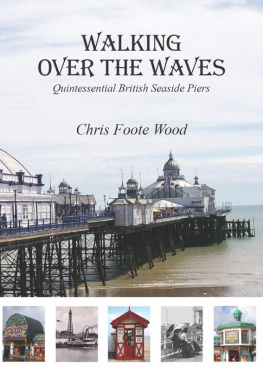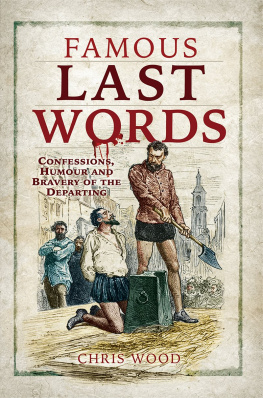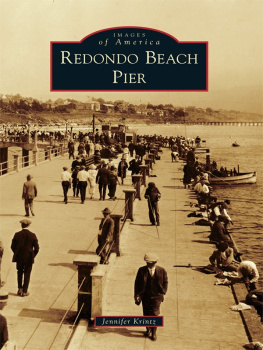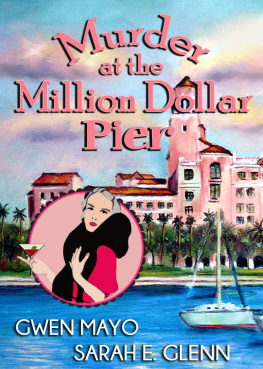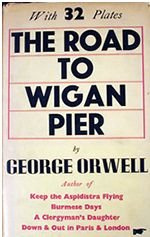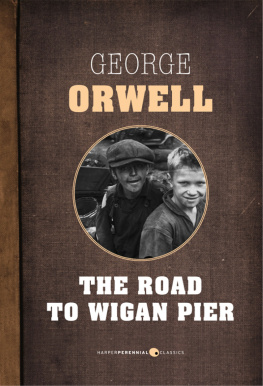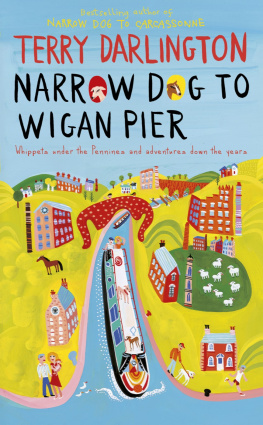Published by
Whittles Publishing ,
Dunbeath,
Caithness KW6 6EY,
Scotland, UK
www.whittlespublishing.com
2008 Chris Foote Wood
ISBN 978-1-84995-243-9
Front Cover: Eastbourne Pier (authors collection)
Frontispiece: Children and dog having a paddle at New Brighton (Frances Foote collection)
All rights reserved.
No part of this publication may be reproduced, stored in a retrieval system, or transmitted, in any form or by any means, electronic, mechanical, recording or otherwise without prior permission of the publishers.
Every effort has been made to trace copyright holders and to obtain their permission for the use of copyright material. The publisher would be grateful if notified of any amendments that should be incorporated in future reprints or editions of this book.
Contents
Piers have fascinated me from the moment I first trod the deck of Blackpools North Pier as a very small boy with my nana and grandad. The imposing entrance, the exotic buildings, the unusual structure, the crowds, the razzmatazz, the shops, the cafs, the ice cream parlours, hucksters and fortune-tellers and, above all (or rather below): the sea. You could see the sea beneath your feet, and yet feel perfectly safe, indeed brave. You could walk over the waves without a care in the world. I was hooked, and have remained so ever since.
But it wasnt until the year 2007 that I finally set out on my first real pier crawl visiting every seaside pleasure pier in England, Wales and the Isle of Man. There ought to be a name for pier enthusiasts. Pier spotters is not quite right, because piers dont move, well, not very much anyway. Pier crawlers might not appeal to some, but I like it. Piers are fun, and this is a fun name. Closely related to pier enthusiasts are the hardy breed of ship spotters, maritime enthusiasts who often make a beeline for piers, especially piers that are situated around the Solent and the Thames Estuary. Armed with their cameras, spotters guides and binoculars, they study every passing ship with enthusiasm.
Back in 1947, when I asked my nana if we could go on Blackpools two other piers, and she said, no, theyre not the sort of places we want to go, I was enthralled. This was my first lesson in the British class system. And so, a social dimension was added to my already heightened curiosity; not just about piers, but about the world in which I found myself. When I learned that other seaside resorts also had piers, I thought: what a wonderful thing it would be to travel all around the coast of Britain and go on every pier in the country.
On a pier, theres always something to do, and usually something to please everybody. Whether its to enjoy the amusements or appreciate the architecture, every taste is catered for. For a small toll or more usually for free you enter another world, a world half-way between the land and the sea yet tied to both. You can patronise the amusements, stroll the deck, take in the views, breathe in the ozone, sunbathe, read, contemplate, go fishing, take a sea trip, have some refreshments, or do any combination of these pleasurable activities. To my mind, there are few things in life as enjoyable as taking your ease with food and drink (alcoholic or otherwise) on a seaside pier.
Piers were built to make money. Victorian entrepreneurs saw the possibilities of cashing in from holidaymakers and day-trippers brought to their seaside resorts by the burgeoning railways. The first piers were built primarily as landing stages for sea trips by steam packet which were all the rage at the time. It is no coincidence that many pier owners and shareholders also had a stake in railways and ferryboats. But as well as making profit from trains and boats, it quickly became clear that money was to be made from the piers themselves and also from the adjoining shore.

Chris and Frances Foote Wood, enjoying the sunshine on Brighton Palace Pier
As soon as the first piers were built, people started walking on them for health and recreation, a simple pleasure that endures to this day. The pier owners brought in bands and concert parties to entertain both sea-trippers and pier strollers, and people even began to dance on piers. Piers became fun! At the same time, piers were presented to the public as exotic, magical places. Piers were given an architecture all of their own, with India, China and ancient Egypt as their inspiration. The idea was to create a world out of the ordinary, an exciting world where day-trippers and holidaymakers could forget their day-to-day worries and be transported into a world of enjoyment and wonder.
So there you have it: piers as another world, piers as profit. Why it has taken me sixty years to realise my dream of visiting every British seaside pier, I cannot explain. But I do know why Ive done it now. After making a career change from thirty years working as a freelance journalist running my own press agency to become a full-time author, I wrote a book called When Im Sixty-Four . In it I advise sixty-somethings to do it now ! So I thought, I had better take my own advice.
In 2007 I set off on my odyssey round the coast of Britain, stopping off at every one of our 56 seaside piers (and quite a few others) on the way. Researching and writing this book has been a thoroughly fascinating, stimulating and memorable experience. I hope it will inspire you to visit more of our wonderful seaside piers and more often.
Chris Foote Wood
Bishop Auckland

Aberystwyth Royal Pier, c.1905 (courtesy of the National Piers Society)
First purpose-built pleasure pier in Wales
__________________
T his Eugenius Birch pier was the first of its kind in the principality, allowing Aberystwyth, looking out over Cardigan Bay, to call itself the Brighton of Wales. Costing 13,600 the pier opened on Good Friday 1865, the same day that the Cambrian Railway started running trains to the town. More that 7,000 people went on the pier that day.
Unlike most of Britains seaside piers, Aberystwyths is built on solid rock foundations. A convenient outcrop allowed Birch to design well holes for the supporting piles which were concreted in.
But disaster struck in January 1866, just a few short months later. The pier was hit by a severe storm which destroyed the end 100 feet of its structure. It took six years for repairs to be completed. Crippled by repair costs and the lack of revenue, the pier company was forced to sell up. In 1872 the new owners built a new pier head with a pavilion and refreshment room. Electric lighting was introduced in 1895. There was enough business to justify adding a 3,000-seat, glass-domed, Gothic-style pavilion at the shore end in 1896 at a cost of 8,000. The Princess of Wales, later to become Queen Alexandra, did the honours on 26 June 1896 with the Prince of Wales, later Edward VII, to earn the pier its Royal title.
There is a connection with the RMS Titanic the ship of dreams. Wallace Henry Hartley (born 1878) from Colne in Lancashire, played his violin on British shores for the last time on Aberystwyth Pier in 1911 before perishing in the 1912 disaster when he famously kept his small orchestra playing until the final moment. That same year, in 1912, the pavilion was converted to a cinema. In 1915 the Borough Council took over the pier on a lease.

